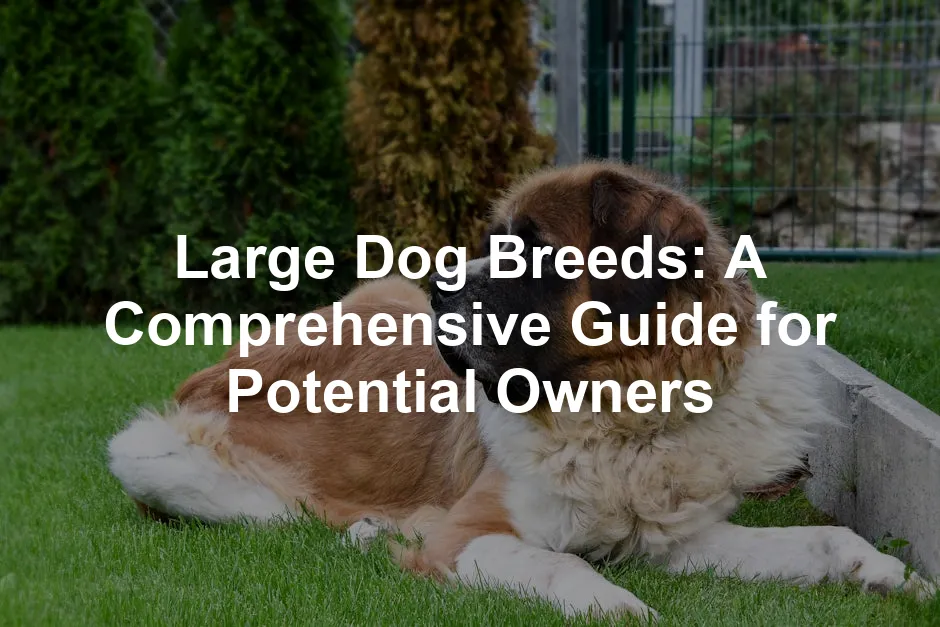Introduction
Large dog breeds have a unique charm. Their size often attracts attention and admiration. Many of them are known for their gentle nature, making them suitable family pets. However, understanding their specific needs is crucial before welcoming one into your home. Each breed has its own requirements for care, exercise, and companionship.
To ensure you provide the best care for your large breed companion, consider getting a Dog Training Guide Book. This will help you navigate the world of obedience training, ensuring your furry friend becomes the best-behaved giant on the block!

Summary and Overview
Large dog breeds are gaining popularity among families and individuals alike. Their size often creates an impression of strength and loyalty, leading many to consider them as ideal companions. However, potential owners must think about their living space, training methods, and exercise routines. These dogs are often labeled as gentle giants, fitting well into various lifestyles, from active families to quieter households.
Despite their friendly demeanor, large breeds can face health issues. Common concerns include hip dysplasia and bloat, which can affect their quality of life. It’s essential to research each breed’s specific needs and potential challenges before making a commitment to ensure a harmonious relationship between you and your new furry friend. For more information on managing health issues, check out Understanding and managing canine hip dysplasia.
Additionally, feeding your large breed dog the right food is crucial. Consider investing in high-quality Large Breed Dog Food to support their growth and health.
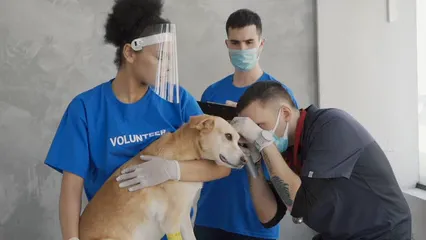
The Unique Appeal of Large Dog Breeds
Why Choose a Large Dog?
Large dog breeds offer a special kind of companionship. Their size often translates to a big heart, making them excellent family members. Many large breeds, like the Saint Bernard and the Mastiff, are known for their loyalty. They thrive on forming strong emotional bonds with their owners.
Consider the gentle nature of these dogs. They often bring calmness to a home, making them ideal for families with children. Their protective instincts can also be comforting. For instance, the Great Dane is not just a big dog; it’s a loving guardian. These gentle giants can be both fierce protectors and tender companions.
Bringing a large dog into your life means inviting a loyal friend who will stand by your side through thick and thin. Whether it’s a playful romp in the yard or a cozy cuddle on the couch, large dogs offer an abundance of love and joy. And to keep those moments safe and fun, consider a Dog Leash and Collar Set to ensure they stay close during adventures.

Key Considerations for Owning a Large Dog
Space Requirements
When considering a large dog, space is crucial. These breeds need room to move and stretch. A house with a yard is ideal, as it allows for plenty of playtime. However, many large dogs can adapt to apartment living if they get enough exercise.
If you live in an apartment, plan for daily walks and play sessions. While they might not need a massive backyard, they do require space to roam. Ensuring your living situation meets their needs will contribute to a happy, healthy life for your large dog. And don’t forget about their grooming needs! A Dog Grooming Brush will help manage their coat and keep shedding at bay!

Exercise Needs
Large dog breeds need ample exercise to stay healthy. Daily walks of at least an hour are essential. These dogs thrive on physical activity, which helps manage their weight and energy levels.
Consider engaging them in activities like fetch or agility training. Swimming can also be an enjoyable exercise for many large breeds. Puzzle toys are great for mental stimulation too. Regular playtime not only keeps them fit but also strengthens your bond. To keep them entertained, invest in some Interactive Dog Puzzle Toys that challenge their minds!
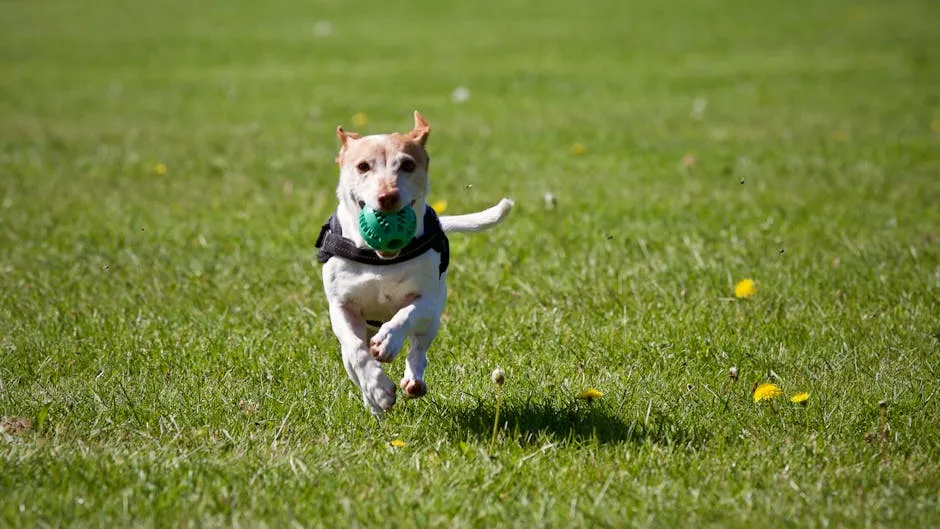
Health Considerations
Owning a large dog comes with health challenges. Common issues include hip dysplasia, a painful joint condition, and bloat, which can be life-threatening. These breeds are also prone to heart disease and certain cancers.
Regular veterinary check-ups are crucial for early detection of health problems. Vaccinations, parasite prevention, and dental care should be part of their routine. Nutrition plays a significant role too; high-quality food tailored for large breeds can support their growth and health. For a comprehensive resource on dog nutrition, visit dog nutrition guide.

Popular Large Dog Breeds
3. Saint Bernard
Saint Bernards are truly gentle giants. Weighing between 120 and 180 pounds, they stand 26 to 30 inches tall. Known for their friendly nature, these dogs are excellent companions for families. Their calm demeanor makes them fantastic with children. Saint Bernards are patient and loving, which is why they often excel as therapy dogs.
Despite their large size, they are not overly energetic. A daily walk and some playtime will satisfy their exercise needs. However, they do require regular grooming, especially during shedding seasons. Their thick coat helps them adapt to colder climates, but they can also thrive indoors with proper care. Don’t forget to provide them with a cozy place to rest like an Orthopedic Dog Bed to support their joints!
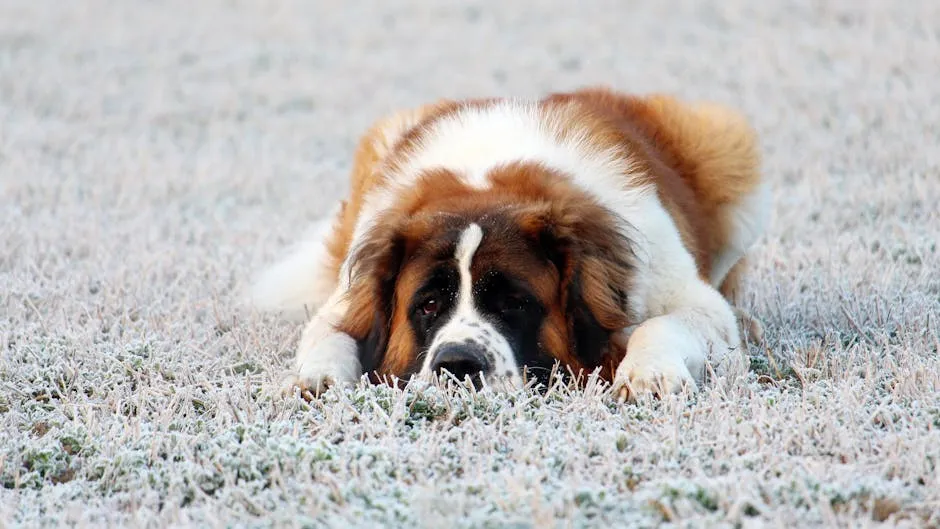
4. Newfoundland
Newfoundlands are known for their impressive size and sweet temperament. Typically weighing between 100 and 150 pounds and standing 26 to 28 inches tall, they are strong swimmers with webbed feet. Originally bred for water rescues, Newfoundlands are gentle and protective, making them excellent family pets. To learn more about this breed, refer to newfoundland dog.
Their calm and friendly nature is perfect for children. They thrive on companionship and enjoy being part of family activities. Newfoundlands require daily exercise, but they’re not overly demanding. A walk or a swim will keep them happy and healthy. Regular grooming is necessary to maintain their thick, waterproof coat. If you’re planning on taking them out for a swim, don’t forget a Dog Life Jacket to keep them safe!
Health-wise, Newfoundlands are prone to certain conditions, such as hip dysplasia and heart issues. Keeping their weight in check can help reduce the risk of these problems. If you want a loving companion who adores spending time with you, the Newfoundland might be the right fit.
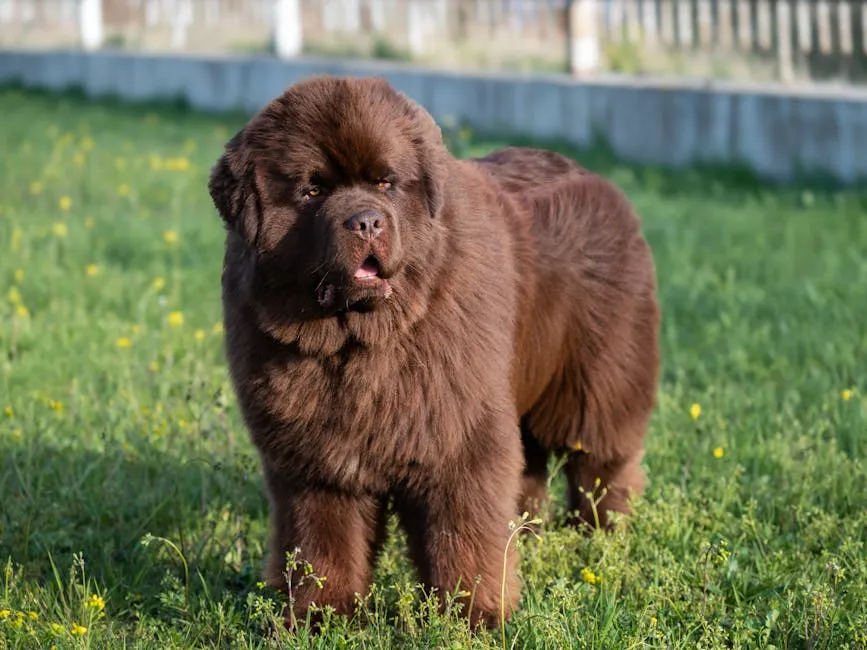
5. Alaskan Malamute
Alaskan Malamutes are strong and majestic dogs. They typically weigh between 75 and 100 pounds and stand about 23 to 25 inches tall. Known for their endurance and strength, they were originally bred for heavy hauling. Their playful and friendly personality makes them great companions for active families.
These dogs require a good amount of exercise. Daily walks, running, or playing in the yard are essential to keep them happy. They thrive on physical activity, so engaging them in games like fetch or agility training is beneficial. Regular grooming helps manage their thick double coat, especially during shedding season. And for those outdoor adventures, make sure you have a reliable Dog Backpack for Hiking to carry their essentials!
While Malamutes are generally healthy, they can be prone to hip dysplasia and other joint issues. Providing a balanced diet and regular vet check-ups is crucial. If you’re looking for an adventurous and loyal friend, the Alaskan Malamute will keep you on your toes and fill your life with joy.

Living with Large Dogs
Behavior and Training
Training and socialization are key for large dogs, starting at an early age. These dogs can grow strong and may unknowingly overpower smaller individuals. Establishing boundaries and teaching commands is essential. Obedience classes can provide structured training, helping them learn essential skills.
Managing behavior involves consistent training and positive reinforcement. Encourage good habits with treats and praise. Regular socialization with other dogs and people helps them feel comfortable in various situations. This reduces the chances of anxiety or aggression. To make training more effective, consider using a Dog Training Clicker to reinforce good behavior!
Remember, large dogs need plenty of exercise to stay calm. A tired dog is a well-behaved dog. Incorporate play and activities into their routine. With patience and commitment, you’ll enjoy a rewarding relationship with your large dog.

Grooming Needs
Large dog breeds vary in grooming needs. Breeds like the Saint Bernard require regular brushing due to their thick coats. On the other hand, short-haired breeds like the Great Dane need less frequent grooming. Regardless of the breed, regular brushing helps minimize shedding and keeps their coat healthy.
To maintain hygiene, focus on areas like ears and teeth. Clean their ears weekly to prevent infections. Regular dental care is crucial for overall health. Additionally, consider scheduling professional grooming sessions for breeds that mat easily. Bathing them as needed keeps them fresh and free from odors. And for those stubborn mats, a good set of Dog Nail Clippers can be a lifesaver!

Family Companionship
Large dogs make incredible family pets. Their friendly nature often wins over hearts in households with children. Breeds like the Labrador Retriever and Bernese Mountain Dog are known for their patient and loving demeanor. They thrive on companionship, which makes them devoted family members. For more on training these breeds, refer to labrador retriever training.
Many large breeds enjoy playing with kids and participating in family activities. Their playful energy can turn ordinary days into fun adventures. Additionally, their size often provides a sense of security. For example, Great Danes are gentle yet protective, making them ideal companions for families.
Overall, the bond formed with a large dog can be incredibly rewarding. Their loyalty and affection create lasting memories for everyone in the household. To help manage their waste during playtime, don’t forget to stock up on Dog Waste Disposal Bags for those outdoor adventures!

Protective Qualities
Some large breeds serve as excellent watchdogs. Breeds like the Rottweiler and Bullmastiff are known for their protective instincts. Their imposing size often deters intruders, providing peace of mind to families.
Early socialization is essential to ensure these dogs develop a well-rounded temperament. Introducing them to various environments, people, and pets helps reduce anxiety and aggression. A well-socialized dog will respond calmly to new situations. This can help them become both loving family members and effective guardians.
With proper training and socialization, you can cultivate a well-balanced protector who is also a beloved companion.

Conclusion
Owning a large dog brings immense joy and companionship. These gentle giants offer loyalty, love, and protection. However, they also require commitment and understanding. Potential owners should research specific breeds to match their lifestyle and needs.
Before adopting, consider your living situation, exercise capabilities, and grooming requirements. A well-prepared owner is key to a happy relationship with a large breed. By understanding their needs, you can ensure a fulfilling and lasting bond with your new furry friend. And don’t forget to pamper them with some delicious Dog Treats for Training to reward good behavior!
Please let us know what you think about our content by leaving a comment down below!
Thank you for reading till here 🙂
All images from Pexels

